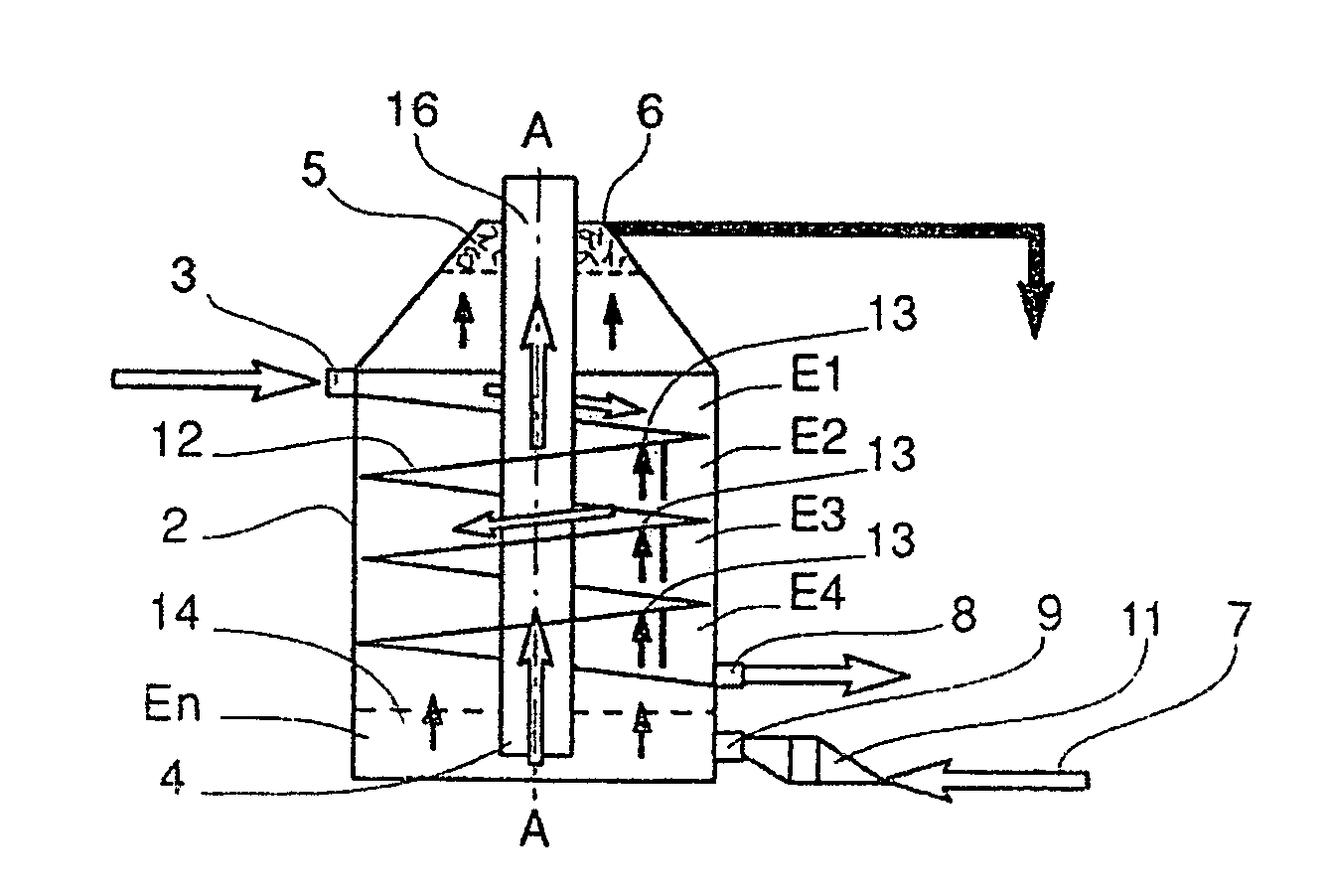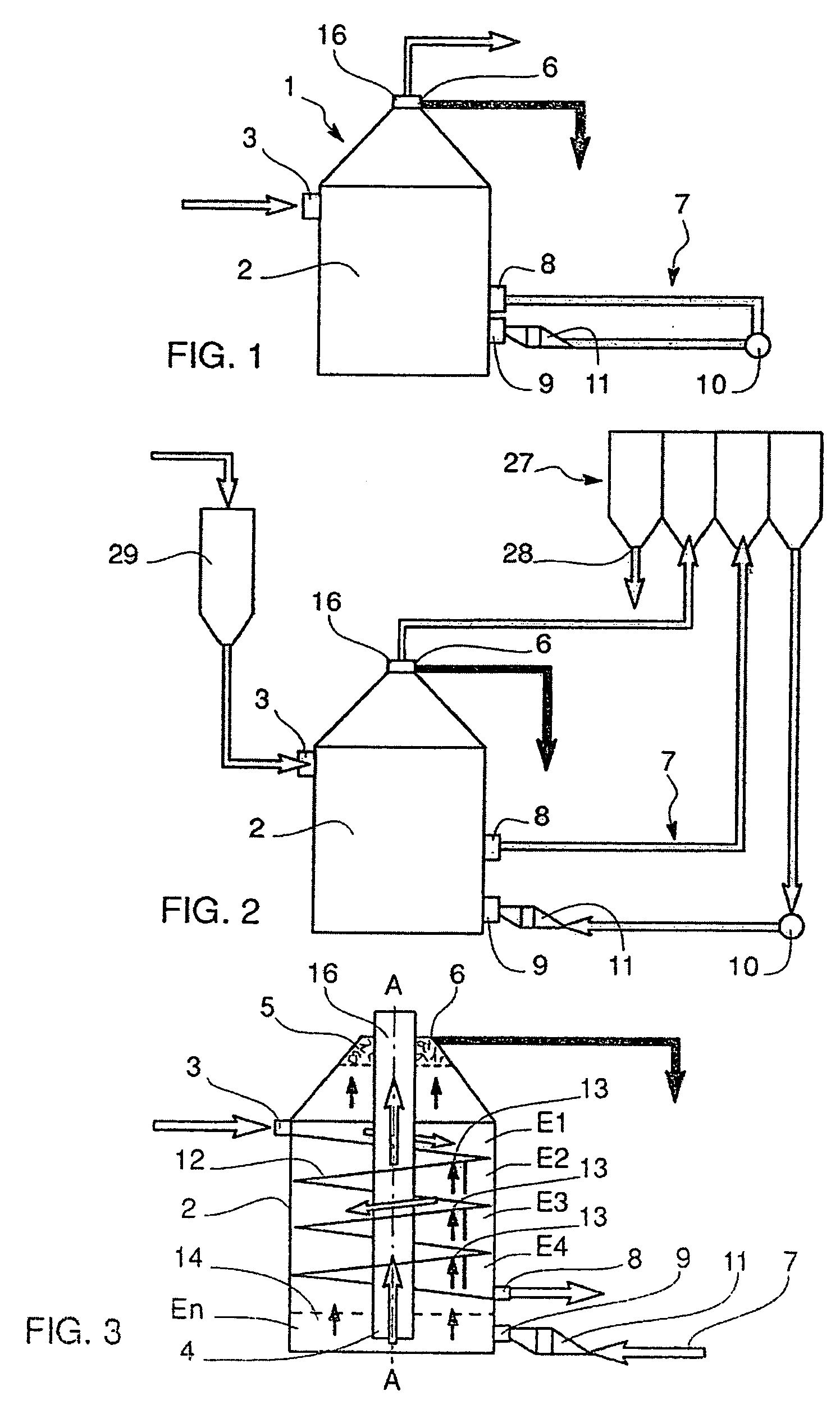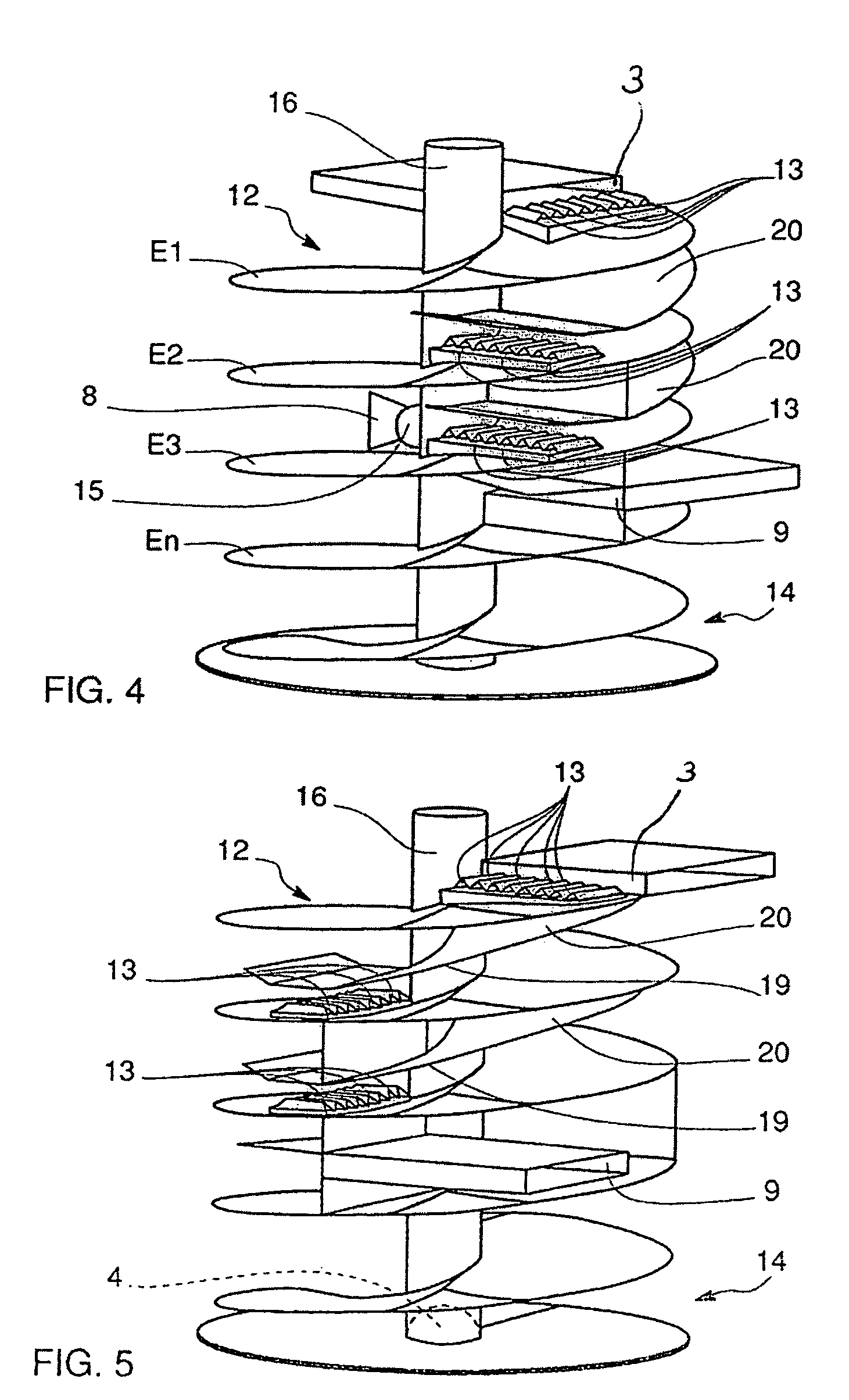Process for de-inking paper pulp and flotation cell used for this process
- Summary
- Abstract
- Description
- Claims
- Application Information
AI Technical Summary
Benefits of technology
Problems solved by technology
Method used
Image
Examples
first embodiment
[0077]the invention is shown in FIGS. 1 to 12.
[0078]The flotation cell 1 comprises an enclosure 2 with vertical axis A-A. In this first embodiment, this enclosure is cylindrical. It includes, in its upper portion, a main inlet 3 for the paper pulp to be de-inked and, in its lower portion, a main outlet 4 for the de-inked pulp.
[0079]The pulp to be de-inked is supplied under a certain pressure into the main inlet 3 and moves from the top to the bottom, passing through successive stages E1, . . . En, to be finally evacuated through the main outlet 4.
[0080]During its moving downwards, the pulp passes through these successive stages E1, . . . En, which, in their upper portion, are provided with bubble passageways 13, the bubbles being introduced into the lower portion of the enclosure 2. The number ‘n’ is generally about 10 and thus corresponds to 10 stages.
[0081]The bubbles pass through these passageways 13 from one stage to a higher stage, while being mixed again with the pulp in each ...
second embodiment
[0118]FIGS. 13 and 14 schematically show the flotation cell 30 according to the invention. Identical or similar elements are designated by the same reference numerals as the elements already described with reference to FIGS. 1 to 12.
[0119]The flotation cell 30 includes an enclosure 31 with a globally parallelepipedal shape, here rectangular and much longer than wide, inside which are arranged means for guiding the pulp from the top to the bottom, from an upper stage to a lower stage. These guiding means include elongated transverse elements 32 extending on both sides of the axis A-A of the enclosure, in order to form a zigzag guiding path.
[0120]Each transverse element 32 connects two opposite side walls 33 parallel to each other. In the example shown, each transverse element 32 has an upper surface which is primarily horizontal, whereas its lower face is inclined upwardly, in order to guide the bubbles released from the pulp during their upward movement.
[0121]The end (32′) of the tr...
PUM
| Property | Measurement | Unit |
|---|---|---|
| Flow rate | aaaaa | aaaaa |
| Speed | aaaaa | aaaaa |
| Shape | aaaaa | aaaaa |
Abstract
Description
Claims
Application Information
 Login to View More
Login to View More - R&D
- Intellectual Property
- Life Sciences
- Materials
- Tech Scout
- Unparalleled Data Quality
- Higher Quality Content
- 60% Fewer Hallucinations
Browse by: Latest US Patents, China's latest patents, Technical Efficacy Thesaurus, Application Domain, Technology Topic, Popular Technical Reports.
© 2025 PatSnap. All rights reserved.Legal|Privacy policy|Modern Slavery Act Transparency Statement|Sitemap|About US| Contact US: help@patsnap.com



